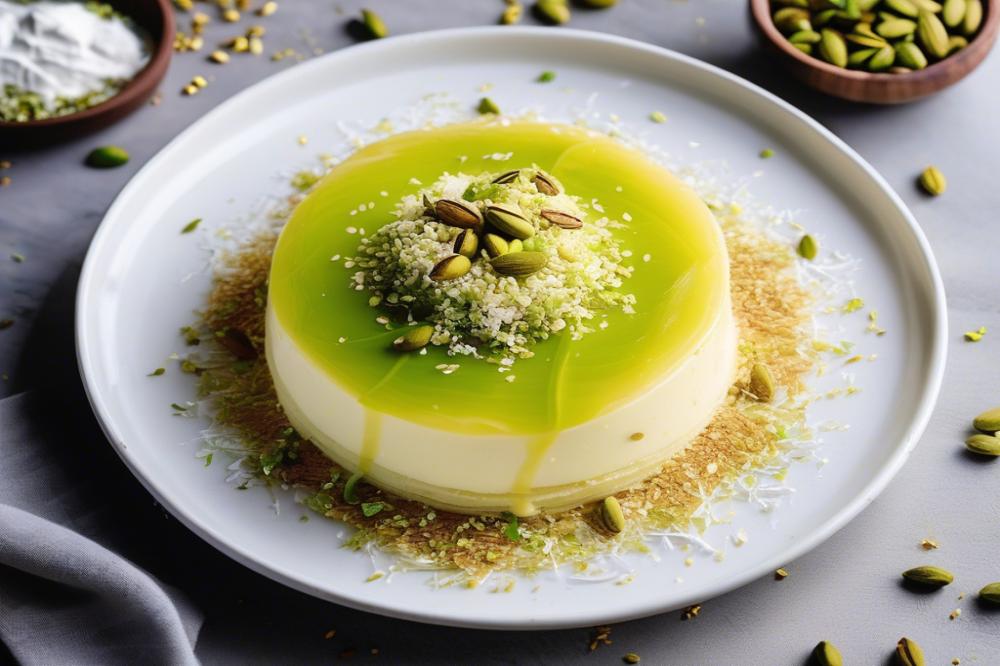Exploring Traditional Greek desserts
Greece is well-known for its rich culinary traditions, especially when it comes to sweets. Traditional Greek desserts often feature ingredients such as honey, nuts, and various types of phyllo pastry. These elements come together to create flavors that are delightful and satisfying. Each dessert tells a story, reflecting the culture and history of the region.
Among these cherished treats, Ekmek Kataifi holds a special place. This dish is more than just a dessert; it represents a blend of influences from different cultures that have shaped Greek cuisine over the centuries. It is revered not only for its delicious taste but also for its intricate preparation process. Enjoying Ekmek Kataifi is often a communal experience, shared during celebrations and family gatherings, making it a dessert that resonates with generations.
This article’s aim is to uncover the secrets to preparing this delightful Greek custard dessert. Readers will gain insight into each step of the process, from ingredients to techniques. Learning about this recipe can enhance any cook’s repertoire. If you want to impress friends or family, mastering Ekmek Kataifi is a worthwhile pursuit. Let’s dive into the world of Greek desserts and discover the magic behind this beloved dish. For a closer look, click on #anchor_text_1# and explore! For more culinary inspiration, don’t miss #anchor_text_2#.
The Allure of Ekmek Kataifi
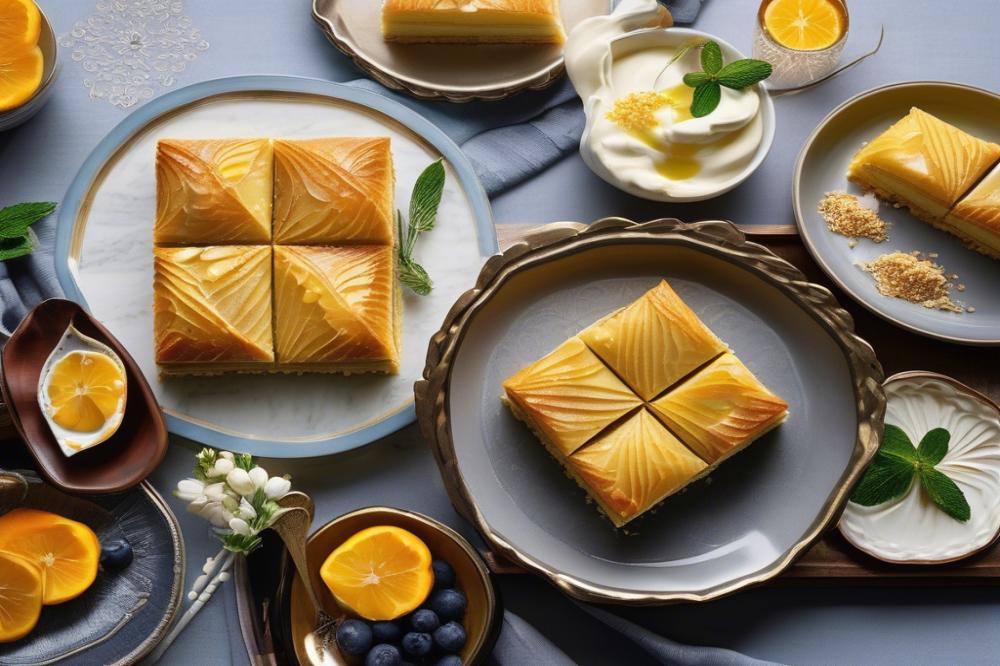

Historical background of Ekmek Kataifi
Ekmek kataifi has deep roots in the Mediterranean region. This dessert is tied to the Ottoman Empire, which influenced many culinary traditions. Its origins can be traced back to Turkish pastries, often made with delicate layers of dough. Over time, it made its way into Greek culture and became beloved by many. The combination of crispy kataifi dough and rich custard symbolizes the fusion of flavors and traditions across centuries. Furthermore, many families have their own cherished recipes, passed down through generations.
Cultural importance and variations
Ekmek kataifi holds a special place in Greek celebrations. This dessert is often present during festive occasions and family gatherings. Many people view it as more than just a dish; it represents hospitality and warmth. In different regions, variations appear. Some might add ingredients like pistachios or almonds, while others emphasize the syrup’s flavors. Such changes reflect local tastes and traditions. Regardless of the version, the essence remains the same—delight and comfort.
Comparison with other Greek desserts
When comparing Ekmek kataifi to other Greek desserts, similarities can be found. Baklava, for instance, also features layers but usually incorporates nuts and honey. Halva provides a different texture, relying predominantly on semolina or tahini. Each dessert showcases the craftsmanship of Greek pastry makers. While some desserts highlight sweetness, Ekmek kataifi combines textures in a satisfying way. The creamy custard contrasts beautifully with the crunchy topping, making it distinct. Each bite offers a delightful experience that keeps people coming back for more.
Ingredients List and Cooking Instructions
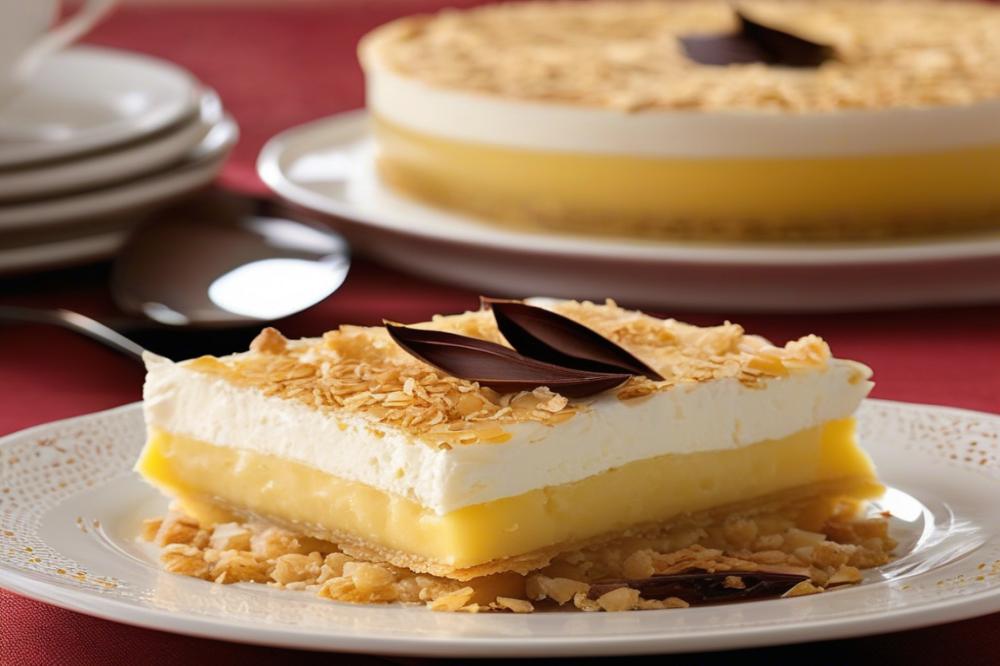

Detailed Ingredients List with Measurements
Gather the following items for this delightful dessert:
- Kataifi pastry: 400g
- Milk: 1 liter
- Sugar: 200g
- Cornstarch: 100g
- Eggs: 3 large
- Vanilla extract: 1 teaspoon
- Butter: 100g
- Unsalted pistachios (for garnish): 50g
- Water: 500ml
- Lemon juice: 2 tablespoons
Preparation Steps
To create the custard, start by combining milk, sugar, and cornstarch in a large saucepan. Stir these ingredients together over medium heat. Keep mixing until the mixture thickens. It’s important to be patient during this step. Once thickened, remove the pan from heat. Now, let it cool for a moment before adding in the eggs one by one. Mixing in the vanilla extract enhances the flavor. Ensure everything is well combined for the best result.
Next, move to the assembly of the Ekmek Kataifi. First, preheat your oven to 180°C (350°F). Melt the butter in a separate bowl. Separate the kataifi pastry into strands. Lay half of the pastry in a buttered baking dish, spreading it evenly across the bottom. Pour half of the custard over this layer and spread it out gently. Next, cover it with the remaining kataifi strands. Pour the rest of the custard on top, ensuring every bit is covered. This layering creates a luscious texture.
The baking process involves placing the dish in the preheated oven. Bake for about 30-40 minutes, or until the top is golden brown. While that bakes, prepare a syrup. Combine the water, sugar, and lemon juice in a small pot, and let it simmer for a few minutes. Pour this syrup over the warm dessert right after baking. This step adds moisture and sweetness to every layer.
After the Ekmek Kataifi cools down, garnish it with chopped unsalted pistachios. They add a lovely crunch and vibrant color to the dessert. Once plated, share the joy of this delicious dish with your friends and family. Everyone will appreciate the effort and enjoy the delightful flavors!
Nutritional Information
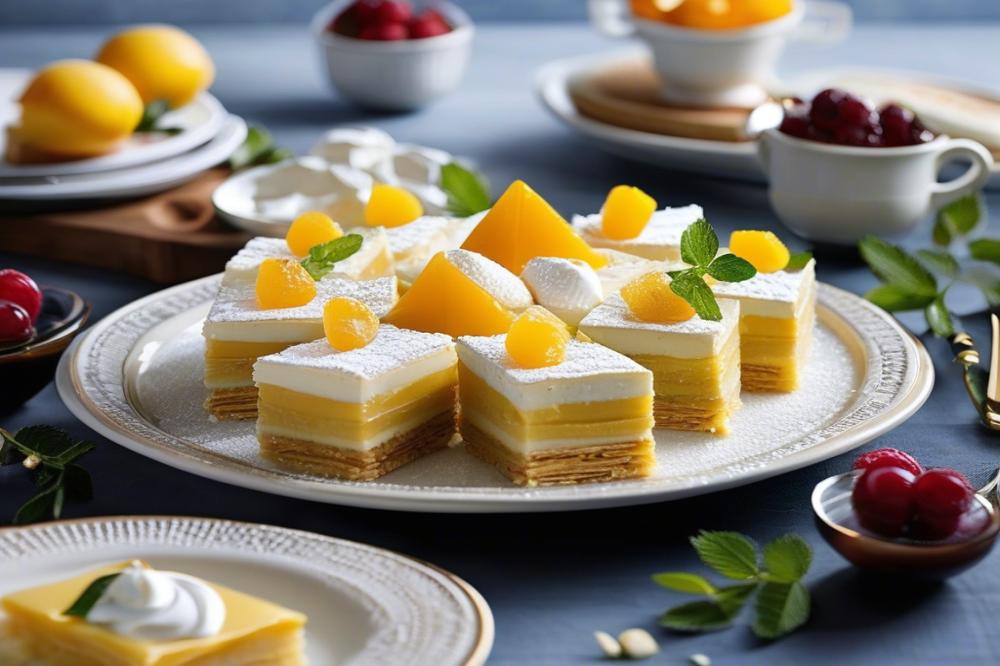

Understanding the nutritional values of Ekmek Kataifi can enhance your appreciation of this delightful dessert. Each serving typically contains approximately 300 calories, making it a delicious yet moderate treat. Moreover, this dessert offers around 5 grams of protein, 15 grams of fat, and 40 grams of carbohydrates. These numbers can vary slightly based on specific ingredient choices and portion sizes.
Health Benefits of Key Ingredients
The ingredients used in Ekmek Kataifi contribute to its unique flavor and potential health benefits. For instance, the custard base often employs milk or cream, providing calcium and vitamin D. These nutrients support strong bones and overall health. Additionally, nuts, often sprinkled on top, bring healthy fats as well as fiber, both of which can be beneficial for heart health.
Syrup made from sugar and water adds sweetness but also raises the calorie content. While moderation is key, the sweetness can also provide a quick source of energy. Overall, the balance of proteins, fats, and carbohydrates gives this dessert a satisfying feel.
Considerations for Dietary Restrictions
Dietary restrictions can pose a challenge with a dessert like Ekmek Kataifi. Those who are lactose intolerant may find the custard difficult to digest. However, alternatives using plant-based milk and substitutes for cream can create a suitable version. Similarly, vegans can use egg substitutes in place of traditional eggs found in some variations.
For individuals with nut allergies, it is important to skip the nut toppings or use seeds instead. Adjustments to the syrup can help reduce sugar content for those monitoring their intake. Reading ingredient labels carefully can aid in making informed choices.
Common Mistakes to Avoid
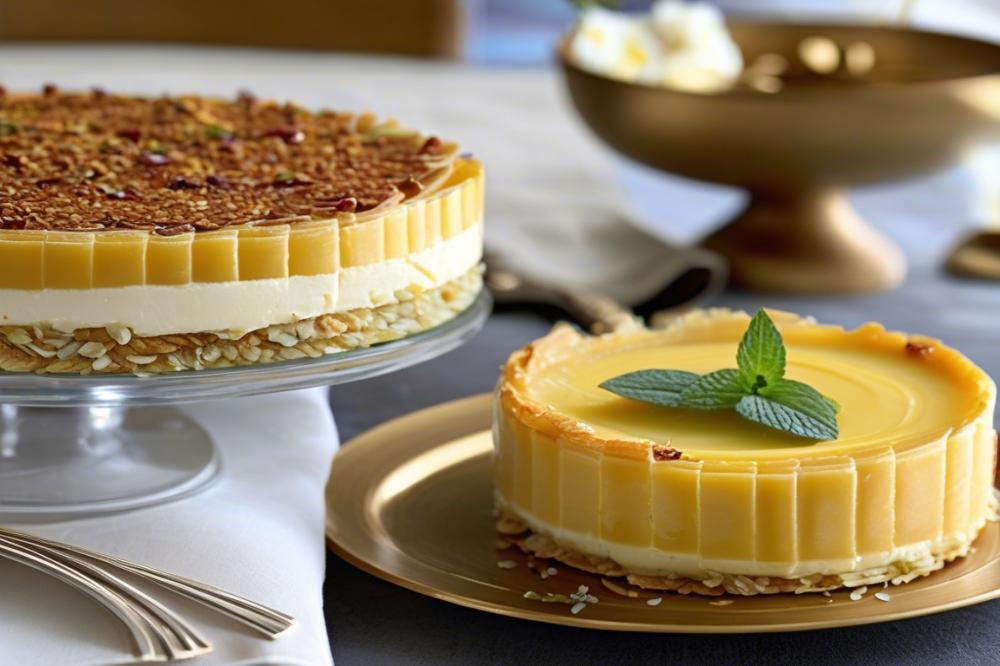

Typical Errors in Making Ekmek Kataifi
Many bakers often overlook the importance of prepping the kataifi dough. It’s common to rush, which can lead to uneven textures. Another frequent mistake is not allowing the syrup to fully cool before pouring it over the dessert. If the syrup is too hot, it can make the overall dish soggy. Additionally, some people underestimate the need for patience while waiting for the custard to set. Skipping this step can result in a watery filling that lacks substance.
Tips for Achieving the Perfect Custard Consistency
Creating the ideal custard requires attention. Start by whisking the eggs and sugar thoroughly before adding them to the milk. This helps prevent lumps. When heating the mixture, do so over low heat and stir constantly. This prevents the custard from sticking to the bottom of the pan. Testing for the right thickness is crucial. A good rule of thumb is to remove the custard from heat once it coats the back of a spoon. If in doubt, think of a pudding-like texture as your goal.
Importance of Proper Assembly and Baking
Getting the assembly right is fundamental. Layering the kataifi and custard should be approached with care. Don’t rush the process; take your time to spread the custard evenly. When it comes to baking, paying attention to oven temperatures matters. Incorrect heat settings can lead to uneven cooking. Covering the dessert with foil during baking can help it retain moisture. Just remember, the end result should be a golden top with a smooth filling beneath. Mastering these steps will elevate your dessert beyond basic expectations.
Serving Suggestions and Variations
How to Serve Ekmek Kataifi
Ekmek Kataifi is best served chilled. Cut it into squares for easy serving. A sprinkle of crushed pistachios adds a lovely touch. Some people prefer to serve it with whipped cream on the side. This dessert can also be plated individually in small glass bowls for a more elegant presentation.
Popular Variations and Toppings
There are many ways to enhance the flavor of Ekmek Kataifi. Some choose to layer it with fresh fruits like strawberries or raspberries. Others enjoy it with a drizzle of chocolate or caramel sauce. A dusting of cinnamon can bring warmth to the dish. For those who love nuts, adding walnuts or almonds can provide a nice crunch.
Pairing with Beverages for an Authentic Experience
Beverage pairing can elevate the whole dining experience. Traditional Greek coffee complements the dessert beautifully. For tea lovers, a light herbal tea can balance the sweetness. Some might opt for a dessert wine, enhancing the flavors further. A refreshing glass of rose water lemonade can also offer a delightful contrast.
Wrapping Up the Flavors of Ekmek Kataifi
Mastering Ekmek Kataifi is more than just a cooking skill. It opens the door to rich flavors and textures that define Greek dessert culture. Each layer of this dish tells a story, combining crunchy kataifi pastry, luscious custard, and nutty toppings. Understanding how to balance these elements is essential.
Do not hesitate to dive into the world of this delightful dessert. The journey may seem daunting at first, but with practice, you will craft a treat that impresses family and friends alike. Follow the steps carefully, and don’t be afraid to put your own twist on the traditional recipe.
Exploring Greek cuisine can be a rewarding adventure. Beyond Ekmek Kataifi, many other desserts await your discovery. From Baklava to Galaktoboureko, each dessert provides a glimpse into the culture’s rich heritage. Embrace this opportunity. Let your kitchen become a place of creativity and tasting excitement. Remember that cooking is not just about following rules; it’s also about making the dish your own. For more delicious ideas, check out #anchor_text_3# or #anchor_text_4#. Enjoy the delightful journey into Greek flavors!

